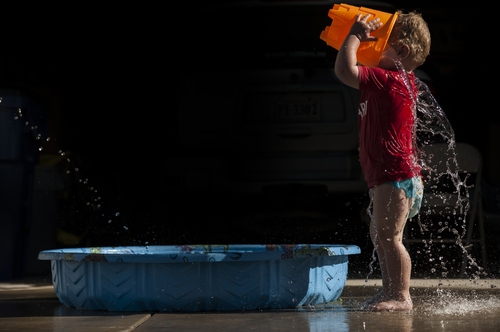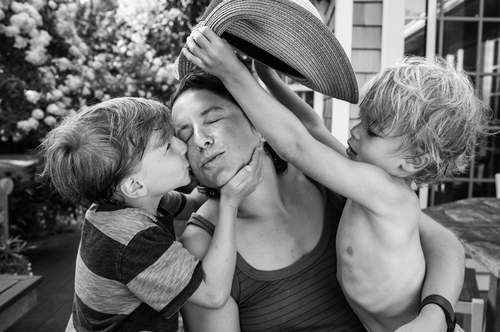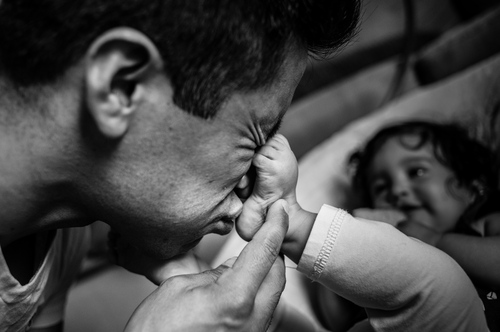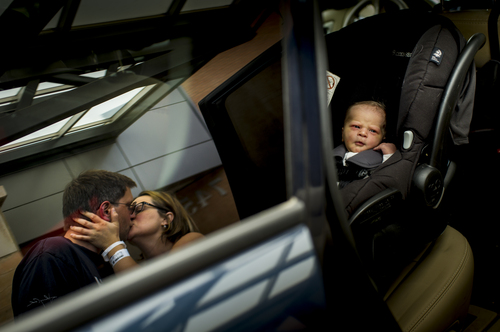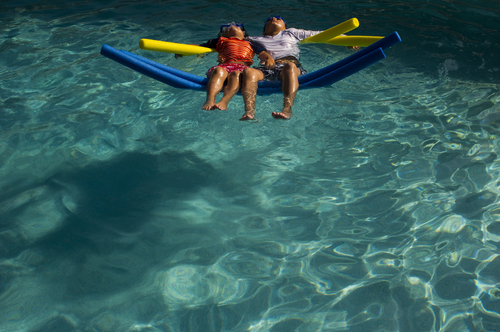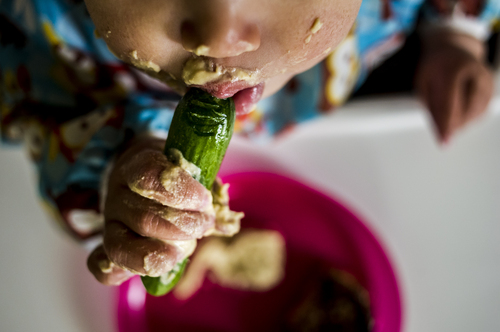While portraits will always be timeless, more and more families are looking to walk away from a photo session with images that don't have a cookie-cutter feel, but have meaning, are more personal, and document what life is like for them as family.
Kirsten Lewis is the country's most well-known Family Photojournalist and sparked a lot of interest among photographers in Family Photojournalism through her two courses on CreativeLive.
Here, she shares her tips on getting started in family photojournalism.
1)Become familiar with the photojournalism world. A great starting point is to become familiar with photographers from both Magnum and the Vii Agency. Study the work and stories these photographers put out into the world. It is incredibly inspiring to look at their work and helpful because they are documenting real life events on a regular basis. Additionally, because each photographer has their own unique voice and approach to storytelling, they encourage others to define their own vision. For Kirsten, looking at the work of these photographers is more helpful than looking at the work of other family photojournalists because it leads to too much comparison, which is not beneficial to personal or professional growth.
2)Practice. A lot. Start offering short, in-home sessions for friends and family with no pressure or expectations. Send them only the the photos you really love and that's it! If you have children, photograph them every day for practice. Because moments happen throughout the day, Kirsten suggests always having a camera out and available for unexpected, as well as anticipated, events. For reference, Kirsten photographed almost 20 Day In The Life sessions for free before she began charging. Before you start charging clients, make sure you put in your time, gain experience and feel confident enough in the field that you know you can deliver a solid collection to paying clients.
3) Don't be afraid to make the transition slowly. In fact, Kirsten strongly suggests taking this approach. A good approach is to offer paying clients who have hired you to shoot more traditionally the option to go back to their home and have an hour of in home coverage for free after their shoot. Promise nothing in regards to the pictures other than that you will share the best photos from this in-home portion of the session with them.
4)As you start making stronger and stronger moment images, either from your own family, free sessions, or add-ons to your paid traditional sessions, begin trading more traditional photos out of your portfolio with the newer ones. Eventually, you will find that your work online is a full collection of documentary work.
5) Don't rush the process. You don't want to start charging for documentary sessions before you are ready and you want only your strongest family photojournalism photos online and as part of your portfolio. Remember that your website is your online storefront and your photos are your advertising. Your collection represents the kind of work your future clients can expect from you so don't put family photojournalism photos up just to have them there. According to Kirsten, the worst thing you can do is remove all of your strong pictures, no matter what the genre, and just replace them with a bunch of mediocre documentary ones. You won't book any clients with mediocre photos.
6)Don't try to convince clients they want a family photojournalism session. Instead, since this is a very new approach to family sessions and most people have no idea that this option exists, you need to let potential clients know that these types of sessions exist so that when they see documentary photos they will decide they have to have these types of photos for themselves. To do this Kirsten suggests that when you have an inquiry you let the potential client know about this new approach you are offering and send them a couple of slideshows so that they emotionally connect to the photos. Hopefully, after seeing these slideshows clients will imagine their own children stealing cookies or reading while on the potty. Facebook is another great resource and every picture you post should be tagged with your clients so all of their friends and family see them and fall in love with this new approach. Posting regularly will help with the audience reach and will show that you are consistently making this kind of work.
7)Have some options for your clients. Some clients may want a documentary photoshoot but a full Da In The Life session may not be in their budget or of interest to them. Some basic activities for shorter shoots are a trip to the ice cream parlor, the beach, bowling, a petting zoo, or a sport in which the whole family can participate. Remember that family photojournalism is not about the activity itself, but rather how each member of the family interacts with one another while participating. Kirsten suggests that at least part of the shoot be in the client's home, where they are most comfortable.
If you proceed slowly and steadily you will be able to find your own style and build a great family photojournalism portfolio that will make you stand out from the crowd.
All photos by Kirsten Lewis and used with permission.

